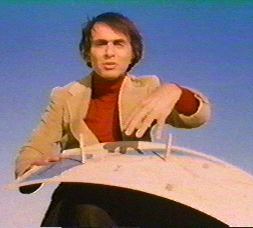Often times, newspaper articles explaining how science works tell a different story than what really happens
 Fifty-five percent of 350,000 people in 70 countries, who participated in an online laughter experiment conducted by the laboratory of the English psychologist Richard Wiseman of the University of Hertfordshire, determined that this was the funniest joke in the world:
Fifty-five percent of 350,000 people in 70 countries, who participated in an online laughter experiment conducted by the laboratory of the English psychologist Richard Wiseman of the University of Hertfordshire, determined that this was the funniest joke in the world:
Two hunters are walking in the forest. Suddenly one of them collapses and collapses. He is not breathing, and his eyes are closed. His friend pulls out the phone and calls the emergency services. He gasps and says: "My friend is dead! What can I do?" The dispatcher answers: "Relax, I can help. First, let's make sure he's dead.” After a short silence, a shot is heard and the hunter returns and says: "Okay, and what now?"
These are the dry data. But in Weissman's personal version, in his new book Quirkology, he describes how the research was really done. Weissman writes that in his opinion "we found the most boring joke in the world, one that makes everyone smile but only a few laugh out loud. But as in many other tasks, the journey to the destination is more important than the destination itself. Along the way we examined what makes us laugh, how laughter prolongs our lives and how humor can unite nations." Such first-hand accounts, published in popular science books, and including not only the destination but also the journey, allow readers a glimpse into the way scientific research is actually carried out.
Formal scientific writing - known as an "explanatory narrative" - presents a clean and orderly process that leads step by step along the path: introduction-methods-results-discussion. This is a path inherent in the "scientific method" of observation-hypothesis-prediction-experiment following one another in a linear fashion, a method that does not work in reality. This is scientific writing similar to autobiography, and as the comedian Stephen Wright said: "The autobiography I write is unofficial." Any other type of writing is fiction. Formal scientific writing is similar to Vigyan history* - the final conclusion draws the explanation to it and forces the facts and events to line up nicely in a causal chain where the ending is the inevitable result of a logical and necessary sequence.
Informal scientific writing - known by me as a "narrative of doing" - presents the true course of science, which involves periodic insights, personal intuitions, random guesses and accidental discoveries. Science, like life, is a messy and random business, riddled with strange coincidences, unexpected ramifications, accidental discoveries, unexpected encounters and unprecedented results. This chaotic process allows a partial understanding of why in recent decades the popular first-person accounts in which scientists explained how they actually conducted their research have been so successful. In particular, this is reflected in the works that explored the idiosyncrasies of life.
In their book Freakonomics (Crown Publishing, 2006) Steven Levitt and Steven Devner presented the power of incentives through some strange stories. For example, most drug dealers live with their mothers because only the guys at the top make the big money, while the rest wait their turn and perform their duties. In another example, they show that baby names are indicative of parents' motives. In his book "The Economic Naturalist: In Search of Solutions to Everyday Puzzles" (Basic Press, 2007), Cornell University Professor Robert Frank applies the principles of cost-benefit analysis to explain such oddities as why ATMs designed for drivers contain signs in Braille (because it's cheaper for girls all devices in the same way, both for pedestrians and drivers), why brown eggs are more expensive than white eggs (because the demand is low and the hens that lay them are bigger and eat more food), why it is harder to find a taxi in the rain (because on rainy days taxis are used more, and then many drivers fill their daily quota and drive home) and why milk is stored in rectangular cardboard boxes, while soft drinks are sold in round cans (because it is easier to drink straight from a round can, but it is more convenient to pour milk and store it in the refrigerator in a rectangular box).
In the previous issue I came out against the artificial (and repulsive) ranking that put technical scientific writing above popular writing. I propose to elevate popular writing to the status of "combining science" where good scientific writing combines data, theory and story into one useful and persuasive work. And to that I will add, that studying the details of life, especially on the "crazy" fringes of science, makes the scientific process more accessible to every person. While the narrative of the explanation looks like "This data led me to the conclusion..." the narrative of the doing looks like "Hey, that's weird...". In writing the biography of science, the oddity trumps the data.
* The Whig approach sees history as a process of progress towards a democratic constitution, British style, and tends to organize the facts to suit this. The name derives from the name of the Whig party that advocated a constitutional monarchy. – The editors
Michael Shermer is the publisher of Skeptic magazine (www.skeptic.com). His latest book is "Why Darwin Matters?"

3 תגובות
To the point, another point: see the above article, from Dumbledore.
Definetly agree.
Always a pleasure to read Shermer.
Inspirational, no doubt.